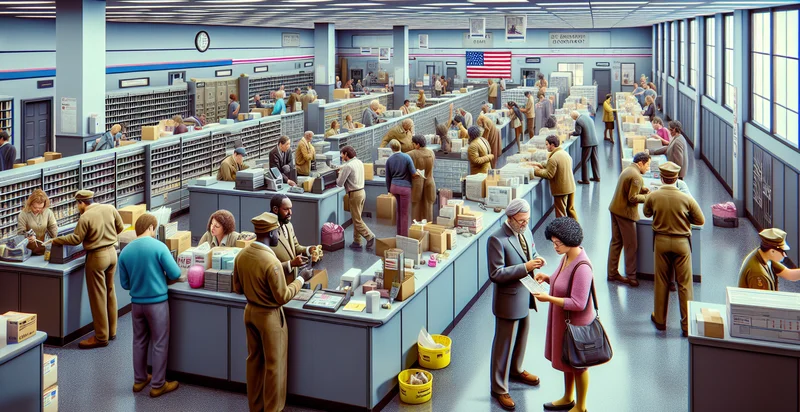Identify post office traffic
using AI
Below is a free classifier to identify post office traffic. Just upload your image, and our AI will predict the volume of customers visiting the post office at different times of the day - in just seconds.

Contact us for API access
Or, use Nyckel to build highly-accurate custom classifiers in just minutes. No PhD required.
Get started
import nyckel
credentials = nyckel.Credentials("YOUR_CLIENT_ID", "YOUR_CLIENT_SECRET")
nyckel.invoke("post-office-traffic", "your_image_url", credentials)
fetch('https://www.nyckel.com/v1/functions/post-office-traffic/invoke', {
method: 'POST',
headers: {
'Authorization': 'Bearer ' + 'YOUR_BEARER_TOKEN',
'Content-Type': 'application/json',
},
body: JSON.stringify(
{"data": "your_image_url"}
)
})
.then(response => response.json())
.then(data => console.log(data));
curl -X POST \
-H "Content-Type: application/json" \
-H "Authorization: Bearer YOUR_BEARER_TOKEN" \
-d '{"data": "your_image_url"}' \
https://www.nyckel.com/v1/functions/post-office-traffic/invoke
How this classifier works
To start, upload your image. Our AI tool will then predict the volume of customers visiting the post office at different times of the day.
This pretrained image model uses a Nyckel-created dataset and has 16 labels, including Average Wait Time, Busy, Crowded, Delayed Service, Extended Wait Time, High Traffic, Light Crowd, Low Traffic, Moderate and Normal Flow.
We'll also show a confidence score (the higher the number, the more confident the AI model is around the volume of customers visiting the post office at different times of the day).
Whether you're just curious or building post office traffic detection into your application, we hope our classifier proves helpful.
Related Classifiers
Need to identify post office traffic at scale?
Get API or Zapier access to this classifier for free. It's perfect for:
- Traffic Volume Analysis: This function can help post offices identify patterns in customer traffic over time. By analyzing the data, management can implement staffing strategies that align with peak times, enhancing service efficiency.
- Resource Allocation: Utilizing the false image classification function allows for better resource allocation within post office locations. By understanding traffic flow, post offices can strategically place sorting machines or additional service counters where they are most needed, optimizing operational costs.
- Location Performance Benchmarking: The traffic identifier can assist in comparing the performance of various post office branches. This enables better decision-making on which locations may require additional support or resources to meet customer demand.
- Marketing Strategy Development: Insights from traffic identification can inform marketing strategies aimed at increasing foot traffic. Post offices can time promotions or events to coincide with periods of high customer flow, maximizing exposure and engagement.
- Capacity Planning: By classifying expected traffic flows, post offices can enhance their capacity planning efforts. Knowing when to expect surges in traffic can help in preparing for seasonal variations, such as holidays, leading to improved customer experiences.
- Customer Experience Improvement: Leveraging traffic data allows post offices to optimize layout and service processes based on actual customer behavior. This can lead to reduced wait times and enhanced overall satisfaction for patrons, fostering loyalty.
- Fraud Detection and Security: The traffic identifier can be used as part of a broader security strategy to monitor unusual patterns in customer flow. Sudden surges or declines in traffic may indicate potential fraudulent activities that require further investigation.


